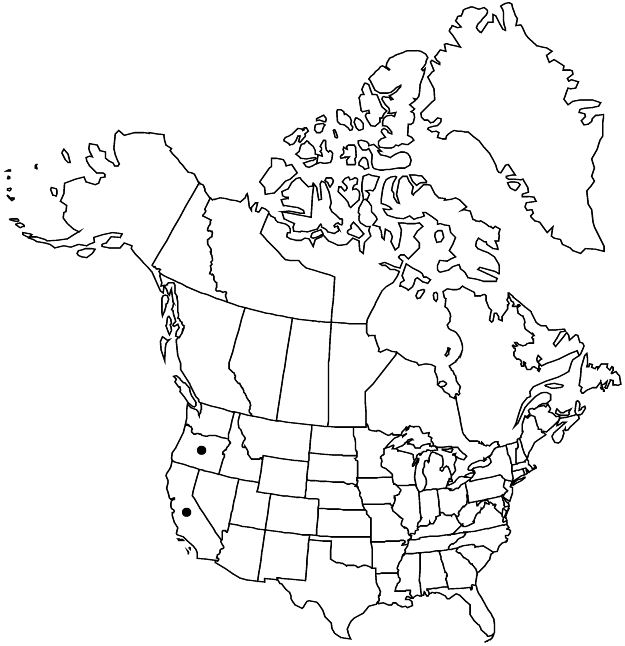Difference between revisions of "Iliamna latibracteata"
Contr. Dudley Herb. 1: 225, plate 20. 1936.
FNA>Volume Importer |
imported>Volume Importer |
||
| (6 intermediate revisions by 2 users not shown) | |||
| Line 16: | Line 16: | ||
|name=Sphaeralcea rivularis var. cismontana | |name=Sphaeralcea rivularis var. cismontana | ||
|authority=Jepson | |authority=Jepson | ||
| + | |rank=variety | ||
}} | }} | ||
|hierarchy=Malvaceae;Malvaceae subfam. Malvoideae;Iliamna;Iliamna latibracteata | |hierarchy=Malvaceae;Malvaceae subfam. Malvoideae;Iliamna;Iliamna latibracteata | ||
| Line 31: | Line 32: | ||
|elevation=500–2000 m | |elevation=500–2000 m | ||
|distribution=Calif.;Oreg. | |distribution=Calif.;Oreg. | ||
| − | |discussion=<p>Iliamna latibracteata is distinctive in having large involucral bracts, which more or less envelop the calyx and equal or surpass it in length. It occurs in the Klamath and Siskiyou mountains of Del Norte and Humboldt counties in California, north to Coos, Curry, Douglas, Jackson, and Josephine counties in Oregon, with an eastern outlying station reported from Mount Shasta, California.</p> | + | |discussion=<p><i>Iliamna latibracteata</i> is distinctive in having large involucral bracts, which more or less envelop the calyx and equal or surpass it in length. It occurs in the Klamath and Siskiyou mountains of Del Norte and Humboldt counties in California, north to Coos, Curry, Douglas, Jackson, and Josephine counties in Oregon, with an eastern outlying station reported from Mount Shasta, California.</p> |
|tables= | |tables= | ||
|references= | |references= | ||
| Line 40: | Line 41: | ||
-->{{#Taxon: | -->{{#Taxon: | ||
name=Iliamna latibracteata | name=Iliamna latibracteata | ||
| − | |||
|authority=Wiggins | |authority=Wiggins | ||
|rank=species | |rank=species | ||
| Line 55: | Line 55: | ||
|publication year=1936 | |publication year=1936 | ||
|special status=Endemic | |special status=Endemic | ||
| − | |source xml=https:// | + | |source xml=https://bitbucket.org/aafc-mbb/fna-data-curation/src/2e0870ddd59836b60bcf96646a41e87ea5a5943a/coarse_grained_fna_xml/V6/V6_493.xml |
|subfamily=Malvaceae subfam. Malvoideae | |subfamily=Malvaceae subfam. Malvoideae | ||
|genus=Iliamna | |genus=Iliamna | ||
Latest revision as of 22:21, 5 November 2020
Stems 1–2 m; herbage harshly and moderately stellate-hairy. Leaf blades deeply (3-), 5-, or 7-lobed, 8–20 cm wide, lobes broadest at middle, base truncate to cordate, margins serrate or irregularly dentate. Inflorescences cymes, forming interrupted spikes or racemes; involucellar bractlets broadly elliptic-lanceolate to ovate, 10–14 × 4–6 mm, equaling or exceeding calyx. Flowers: calyx 8–10 mm, lobes triangular-ovate, 5–8 × 4–5 mm, slightly longer than broad, slightly longer than tube; petals rose-purple, 2–3 cm. Schizocarps 10–15 mm diam.; mericarps 10–14, 6–8 mm. Seeds 2 or 3, dark brown, 2 mm, puberulent.
Phenology: Flowering Jun–Aug.
Habitat: Conifer forests, streamsides, sometimes shaded
Elevation: 500–2000 m
Discussion
Iliamna latibracteata is distinctive in having large involucral bracts, which more or less envelop the calyx and equal or surpass it in length. It occurs in the Klamath and Siskiyou mountains of Del Norte and Humboldt counties in California, north to Coos, Curry, Douglas, Jackson, and Josephine counties in Oregon, with an eastern outlying station reported from Mount Shasta, California.
Selected References
None.
